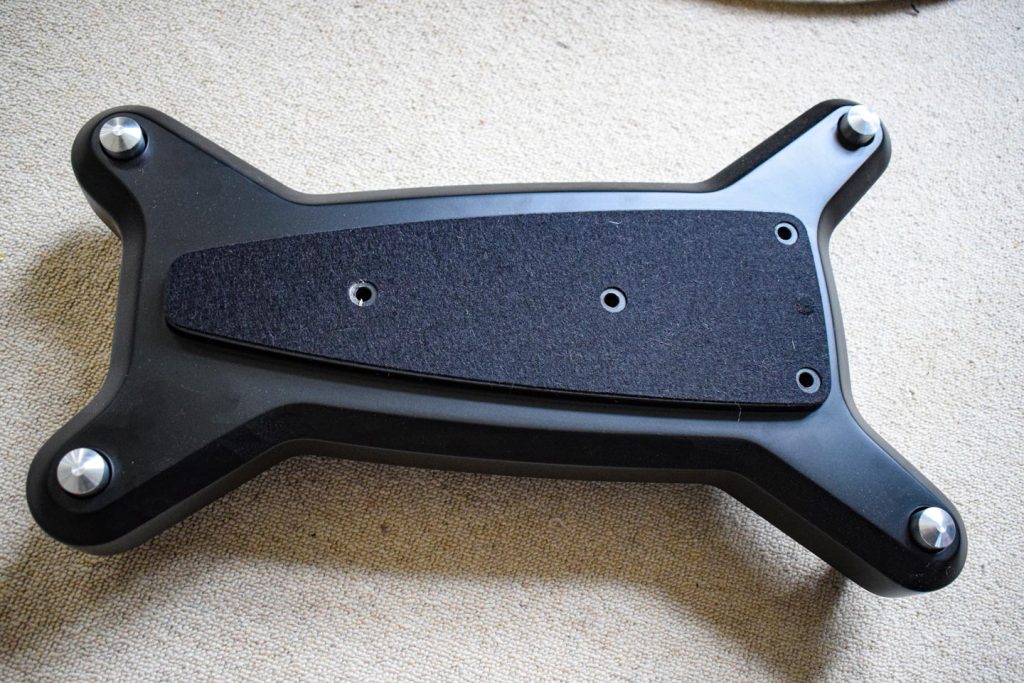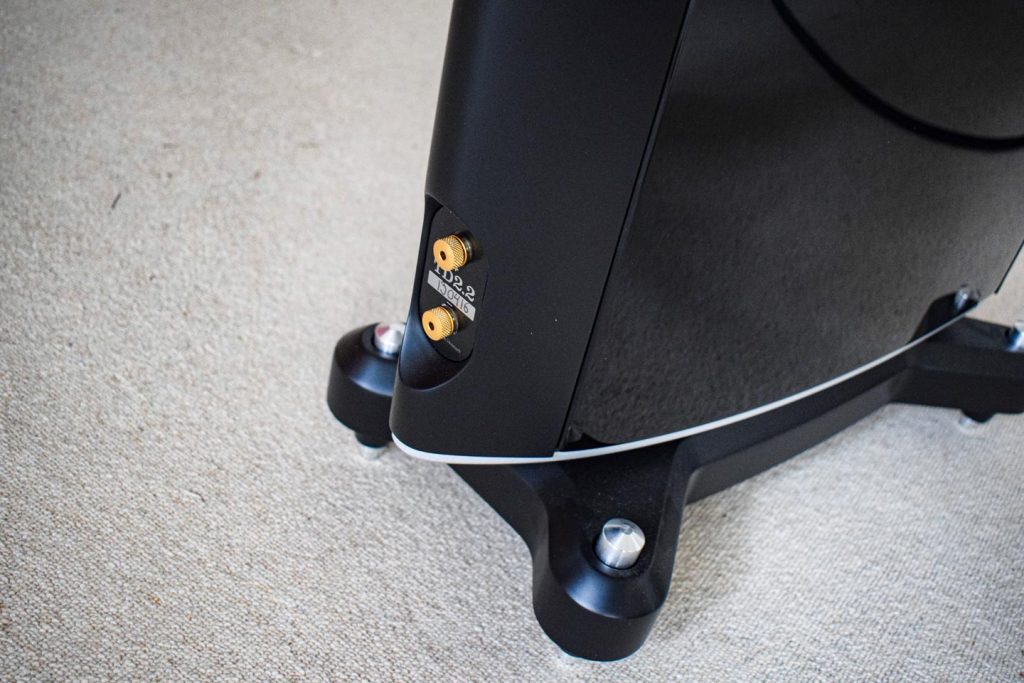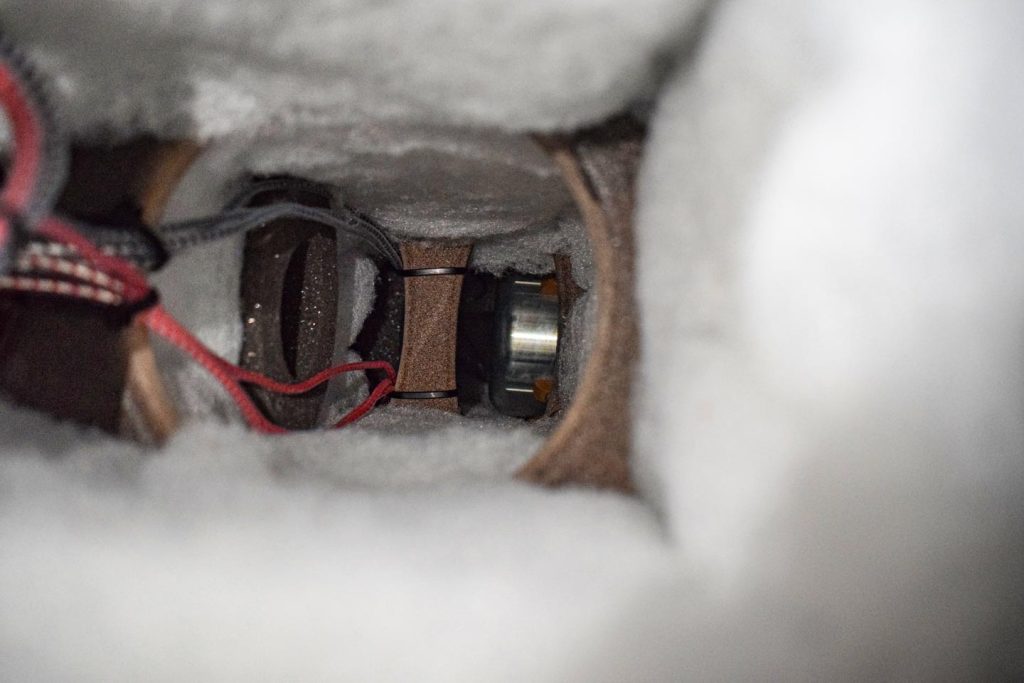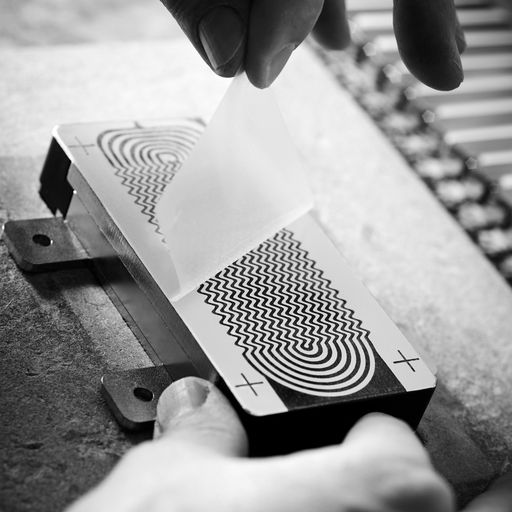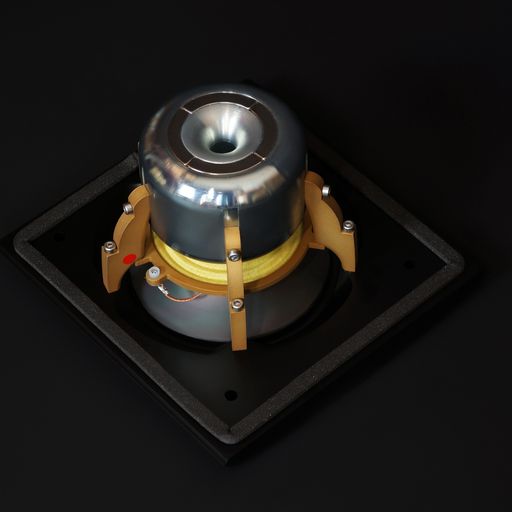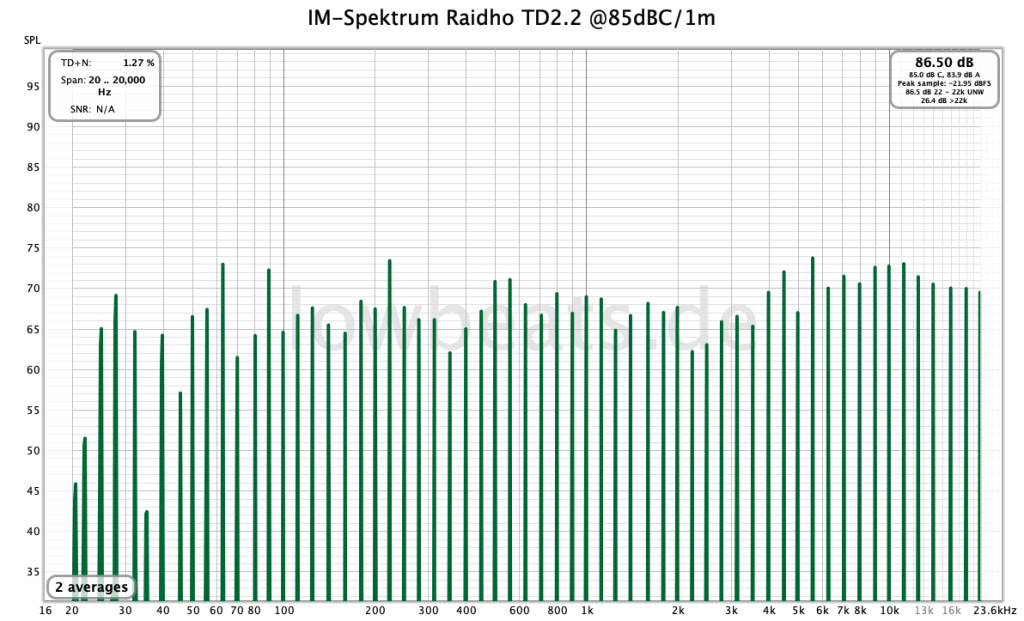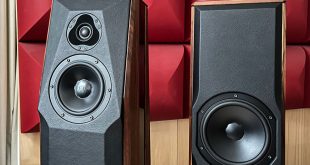In March 2022, we presented – admittedly a little late – the extremely fascinating Raidho XT-1 compact speaker (price: 6,400 euros), which is so small and yet so full-featured. At the HIGH END of the same year, the Raidho people received a lot of applause for their gigantic flagship RD6 for 210,000 euros. The Raidho TD 2.2 floorstanding speaker tested here, with a purchase price starting at 40,000 euros, lies between these extremes. And it is certainly as fascinating as the other two…
The Danes are a proud people. We’re not even alluding to the Vikings; for some years now, the comparison has been established that the Danes are the “Sicilians of the North”. Wide open spaces, mighty families and that extra touch of pride. Which should never be relativized. The management of our test loudspeaker insists that a Dane invented the first dynamic loudspeaker. Just Peter Laurits Jensen in 1918. Raidho sees himself as a worthy descendant in the present.
Of course, we don’t question that. Sicilians and Danes can be quick-tempered – with a weapon at the ready. Well, Jensen learned from Valdemar Poulsen, without question the inventor of magnetic sound recording. But – listen up Danes – Werner von Siemens applied for a patent for the electrodynamic loudspeaker in 1878. The final voice coil loudspeaker with a cone-shaped membrane was patented in 1924 by Messrs. Chester W. Rice and Edward W. Kellogg on behalf of General Electric. Sir Oliver Lodge also got involved and exhibited at the 1925 Radio Exhibition. Conclusion: There is no single, unassailable superhero among speaker developers.
No matter. The hall of fame of the sonorous Danes is well filled. Raidho wants to be the current spearhead. We literally fell to our knees in front of the compact Raidho XT-1. With a small reference to the fact that 6400 euros is quite a lot of money for a two-way controller. That doesn’t bother Raidho at all. This is because the listed parent company Dantax is treating itself to another affordable sister. We also succumbed to the affordable Scansonic HD MB5 B. Now the Raidho TD2.2. It is significantly larger, but you have to swallow first: 39,500 euros is the base price; if you want walnut or a special color, you should have 43,500 euros on hand. However, there is also a lot on offer in return.

Raidho TD2.2 – the technique, the hand and head work
The TD 2.2 scores particularly well with its pleasing shape, graceful design and perfect processing of different materials. Let’s just take the baffle: it consists of three metal modules, each of which houses a driver and is extremely firmly attached to the housing. This looks great, but is also first-class from a resonance point of view, because the metal warps significantly less than the MDF usually used. But to appreciate all the effort that went into the Raidho TD 2.2, you have to zoom in closer. On the foot, for example:
We got even closer and unscrewed the foot. This allows a view of the crossover, which sits directly on the base plate of the TD 2.2. And you get an impression of the high level of passion with which the Danes are involved in the construction – because they don’t let up on the quality of workmanship inside the housing either.
The loudspeakers are of course installed at the company headquarters in Pandrup. And that’s not all: the maxim that only one man can assemble a loudspeaker also applies here. Everything by hand, everything with that extra portion of love.
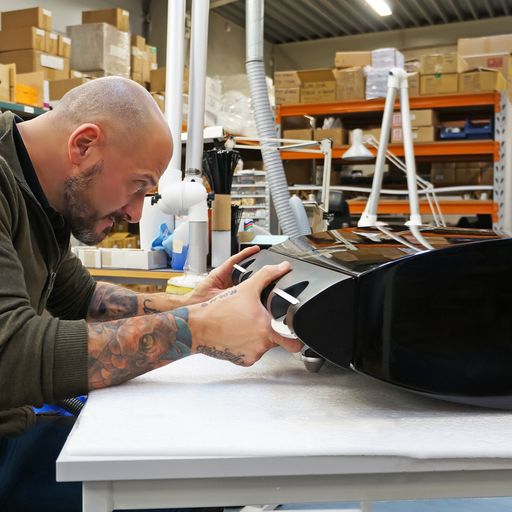
Especially as Raidho not only develops each chassis itself, but also manufactures it itself. No additional purchase. In the TD2.2 we are looking at a ribbon tweeter and two bass/midrange drivers with a diameter of 16.5 centimeters.
This is not really out of hand, the elegance of the appearance is preserved. If you really want more (and have the necessary funds), go for the TD6. Nine drivers beam at the listener – at a height of over two meters and a weight of 130 kilograms. This is the ultimate, but even at 210,000 euros it remains in the realm of fantasy. The TD2.2 aims to be more practical. If you look into its face, you can puzzle over the circuit: 2-way? 3-way? We break it down: The Danes have designed a 2.5-way crossover here, and there is also a classic bass reflex port at the rear.

The star of the set-up is the Raidho-typical tweeter ribbon. Of course, it is also a magical piece made by hand. Created by a man, Freddy. It does not tremble, it does not allow himself to be rushed, the output of tweeters defies all the rules of industrial mass production. The foil consists of a mix of plastic and metal, 11 microns thin, 20 milligrams light, fitted into a small depression that is intended to increase the dispersion angle and the energy to the listening position. In any case, the measurements (see below) showed the excellence of this tweeter: even at very high levels it simply does not distort. A piece of cream!
The two drivers underneath are largely identical, but only the upper one transmits bass and mids equally; the lower bass only pumps below 400 hertz and amplifies the TD 2.2’s thrust in this range.
Raidho has its own clean room in Pandrup for the production of woofers and midrange drivers. Here, the membranes are dusted with diamond particles on a base of ceramic, aluminum and tantalum. Few people know about the latter because it is rarely found, mostly in the soil of Finland. Tantalum belongs to the group of vanadium metals and is particularly suitable for capacitors where high capacitance is required. So much for consistency. Finally, the light gray surface is dyed dark gray. In the back, the Danes pack a large-format neodymium drive, encapsulated and measured for aerodynamic excellence. The whole thing could also be displayed as a work of art in a glass cabinet. Incidentally, the mix of tantalum and diamond dust also gave rise to the family name of the series, “TD”.
Practice
First question: Can such an elegantly forward-thinking loudspeaker get really loud? Especially as this is a 2.5-way construction with rather small 17 inch basses? Answer: He can. And amazingly loud. Our measuring systems determined a continuous level of exactly 100 dB. In the short term (i.e. with dynamic music) it goes up to 112 dB. That’s neat. During the listening tests, the desire for really more rarely arose.
In a normal listening room of up to 40 square meters, the Raidho will probably always offer sufficient reserves. And thanks to the pleasingly neutral tuning in the bass (i.e. without overboosting, as is the case with many speakers), placement near the rear wall is not a problem.
Question 2: What type of amplifier? We have tried tubes in the 10 – 40 watt class, but these are not the first choice, although the electrical behavior of the Raidho should not overtax any amplifier. The impedance never slips below 4.7 ohms and, like the phase, is largely linear.

Hearing test
My life and listening experiences tell me what this loudspeaker will sound like even before the first note. That’s arrogant, of course, but it’s what makes people tick. It will be elegant and fine, not a monitor for the studio, but a great playmate for the living room. It also has a very feminine appearance.
That’s all true, but TD 2.2 can do much more. Raidho pours something into shape, lists promises and pulls out the axe at the decisive moment. The TD 2.2 plays very finely, transparently – charmingly unobtrusive at first hearing. But it is also a dynamic breaker, can be loud, even quick-tempered. It loves the subtlety in music and the large panorama. This is the presence of live equipment at the edge of the stage, but always friendly, humane, musical. In the 1980s, the great pop/rock artists gathered to pay homage to Kurt Weill. “Lost in the Stars” is the name of the record, the CDs are still surprisingly expensive even on Amazon, the LPs have probably been bought off the market by Japanese high-end maniacs.

Who gets the famous moritat of the “shark”? Sting got hold of it – it’s a stroke of genius that can compete with all legendary recordings. The rough voice, a powerful bass line, this could actually be a pop song. The Raidho TD2.2 served it up just like in a live concert, we were in the front row, very direct, no velvet, no whispering. This loudspeaker is not designed to operate in the background, it wants your full attention. On the same album, Tom Waits teaches us what people live on. Of course of brutality and the forgetting of all fine education. Tom Waits is the ambassador of this philosophy made flesh, but the TD2.2 also grunts, growls and bites. At this point she is a bull terrier. The colleagues from “Absolut Sound” praise the stress-free listening in their test. That’s right. But “solid musical foundation”? That could be the code name of a Swiss numbered account but not for this floorstanding speaker. Here we get to the core.
What vocal connoisseurs call “register balancing” is great – when a singer always maintains the inner tension and timbre through all available octaves. This is exactly what ennobles the two Danes – the chassis play together perfectly in terms of timing and basic character. I usually only know this from small two-way speakers or even single point source speaker driver.
Michael Wollny is serving up really good jazz on the piano in Germany right now. As a trio, he achieved a super seller with the album “Ghosts”. Nick Cave is quoted, Duke Ellington, even Franz Schubert. Its “Erlkönig” chases through the audiophile corridor with high dynamics. Raidho loves this music, the pulsation, the state of emergency. And yes, the colleagues from the USA are right: it is “fatigue-free”, never tiring despite its presence. This shows once again that a good ribbon can be superior to many other tweeters – if you have mastered the art.

A potential opponent? Difficult to find. We opted for the (comparatively) beefy Borg from the Fink team – a long-time LowBeats reference and recently extensively refined as the improved “Episode 2″.

To me, the Borg seemed more palatable, with a deeper bass than the Raidho. Can you call that “warmer”? That would lead us down the wrong track, because the TD2.2 is also free of any annoyance. But the Borg played even more effortlessly, especially in the midrange reproduction the Germans are more harmonious, more relaxed than the Danes, who in turn have their tweeter as the secret center of their sound philosophy – air above everything. If you want to feel a pithy pressure in the jazz cellar, you will prefer the Borg. If you want to explore the last, brightest corner of the acoustics in a classical concert hall, you should side with Raidho.
The great Dietrich Fischer-Dieskau recorded Schubert’s Erlkönig several times. But nothing beats his first stereo recording with Gerald Moore on EMI (also released on SACD). Everyone is in full possession of their powers, including the sound engineers.

The hard attack of the hammers in the grand piano pushes every loudspeaker to its limits; it has to be loud, heavy, powerful and fast in repetition. Not for cloudy minds. Then the baritone with that certain extra bass foundation – it has to stand firmly in the middle of the stereo axis. Raidho put in a mighty effort, what a beautiful impact, what a drama in four minutes. The TD2.2 leaves me breathing heavily and with sweat on my forehead.
Conclusion Raidho TD 2.2
This is one of the most coherent speakers I’ve had the pleasure of experiencing in two or three years. Literally an experience, a gift. The photos on these pages show its elegance. But the TD 2.2 can also be brute, never hard-edged, but still a headlong leap into a sea of fine and coarse dynamics. The bass is surprising. He can’t go extremely deep, but he is agile, fast and very well defined. The price? Areasonable despite. This is knowledge, craftsmanship and research from Europe. Never forget the timeline – the two, still compact, floorstanding speakers will fascinate, captivate and delight for years, if not decades.
Rating
Sound QualityUsabilityBuild QualitySummary |
| The rating always refers to the respective price category. |
| | A slightly brighter, more open and yet powerful sound |
| | Absolutely stress-free even at high levels |
| | Great workmanship, elegant “danish design”, exclusive driver high-tech |
| | Electrically undemanding, also harmonizes perfectly with smaller amps |
Distribution:
DANTAX Radio A/S
Bransagervej 15
9490 Pandrup / Denmark
www.raidho.dk
Pair price (manufacturer’s recommendation):
Raidho TD 2.2 (black): 39,500 euros
Raidho TD 2.2 (walnut or individual color choice): 43,500 euros
The technical data
| Raidho TD 2.2 | |
|---|---|
| Concept: | 2.5-way floorstanding speaker with bass reflex support |
| Fitting: | HT: Raidho ribbon, MT: 1 x 16.5 cm, TT: 1 x 16.5 cm |
| efficiency (2.83 V/m): | 84.4 dB |
| Maximum level (duration / short term) | 100 / 112 dB |
| Min. Amplifier power for continuous maximum level: | >150 Watt (4 Ohm) |
| Dimensions (W x H x D): | 32.0 x 115.0 x 52.0 cm |
| Weight: | 45.0 kilo |
| All technical data | |
Teammates and opponents:
First test: Standbox FinkTeam Borg Episode 2
Test pre/power amp combination Canor Hyperion P1 + Virtus M1
More from Raidho:
Test compact speaker Raidho XT-1: the big high-end world in miniature
Test floorstanding speaker Scansonic HD MB5 B: the audiophile enamel





